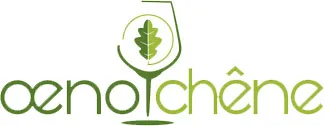Quality & Process
Manufacturing Secrets
From wine architects This is how the two directors of Œnochêne, Jean-Luc Liberto, the president, an oenologist by training, and Jérôme Baudin, the director, define themselves. They have designed an innovative and unique process for the production of oak wood for oenology: a system of gentle toasting by "core convection", inducing the use of ventilated air so that, in the oven, each piece of wood benefits from exactly the same sweeping treatment, ensuring the company's production homogeneity.
Thus, thanks to temperatures ranging from 100° to 300° depending on the desired profiles, the process makes it possible to highlight the qualities of the wood used.
Woodworking
Wood selection
For the selection and supply of wood, Œnochêne has set up strong partnerships with wood merchants to ensure the regularity, quality and traceability of the wood.
The woodworking, along the entire length of the chain, is environmentally friendly, natural, without any addition of chemicals.
The pieces of wood come exclusively from oak species:
- French oak: the Quercus Petraea
- American oak: American white oak (Quercus alba)
The maturation of the wood
Wood is stored outdoors for 18 to 30 months. It is at this stage that a series of physico-chemical reactions take place that are essential to refine the quality of the wood.
The maturation of the wood allows it to lose its excess of unpleasant tannic compounds and develops its aromatic potential through the transformation of hitherto odourless aroma precursors.
The stages of production
Crushing, heating, bagging and traceability of wood.
The heating
The wood is either left in its natural state or heated by convection in a light, medium or strong way.
Convection heating (ventilated hot air system) provides good reproducibility and homogeneous heating.
During the heating of wood for oenology, the polyosides in the wood (mainly cellulose and hemicellulose) are transformed into furanic compounds (caramel notes, toasted), enolic compounds (sweetness, toasted bread), phenol aldehydes (vanilla, spicy, woody) and methyl lactone compounds (coconut, woody)...
The evolution and formation of all these compounds are obtained according to the intensity of the heating.
Bagging
The use of the products is made easier thanks to an adapted packaging.
The chips, microstaves and ministaves are packed in 5 kg polyethylene bags suitable for easy use and implementation in cellars.
For use in barrels or other containers, systems have been studied and are available to customers.
Traceability: rigorous quality control
All lots received by Œnochêne are checked and accompanied by a certificate of origin.
The traceability of the wood is ensured from the reception of the wood to the packaging.
Each piece of wood is checked before each processing operation and each batch undergoes a sensory analysis before marketing.
The HACCP standard has been in place since 2009.
Several advantages result from these technological choices: one, the process allows for the exhaustion of the wood sweetness Two, it offers the possibility, unprecedented until now, to obtain an almost infinite range of aromas, from vanilla to chocolate, gingerbread and mocha, depending on the toasting profiles selected. And last but not least, it is also magnifies the qualities of the winesThe wine's complexity, volume, length in the mouth, aromatic complexity and fruitiness are all emphasized.
While Œnochêne has created a range of toasting profiles, suitable for different types of wine, the company has also developed a range of pieces of wood suitable for oenology, from chips, microstaves, staves, staves. In addition, a range of Quality Ones, specially designed for premium wines, joins the catalogue, by selection of very high-end woodswhich requires even more complex specific work.
This is all the ingenuity of Œnochêne: the company draws on its know-how in oenology to select the woods it uses after refining them. It has a permanent stock of 100 to 150 tons of selected wood, dried in the open air for 18 and 30 months. Œnochêne then examines the grain size of each batch and determines the dosage to be used according to the singularities of the wines: pH, TAV, turbidity...
In short, the work of craftsmen, but also of oenologists that you can discover by tasting the wines produced in the company's tasting room.
